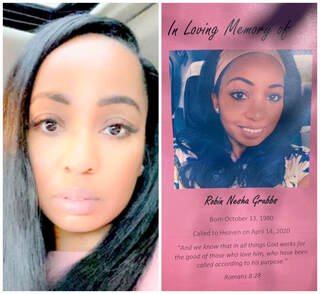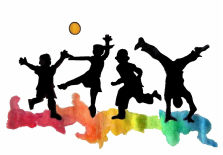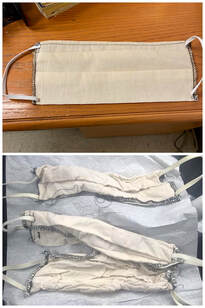 Joe Rojas Joe Rojas As our country continues to fight COVID-19 and racial inequities every day, we want to acknowledge how hard this time is for so many people. We have struggled to figure out how to proceed with this project in a way that values and prioritizes both battles. Our mission in starting this podcast was to highlight people who are working to improve our world by caring for others, and in this time of great turmoil, we feel the stories we have collected from those on the front line of COVID-19 will continue to add to a greater sense of healing and prioritizing of self care, and we are excited to continue to share them with you. In this episode, we interview Joe Rojas on his experience of the prison system’s response to COVID-19. One of the reasons we wanted to investigate the prison system during this pandemic is because the conditions in prisons make containing an infectious disease inherently difficult. This pandemic has disproportionately affected people of color, and with people of color making up a disproportionate percentage of the prison population, one of the things we learned from Joe is that prisons are yet another space where vulnerable populations are disproportionately affected by this virus. Joe is a member of law enforcement. He has been a corrections officer in the prison system for 25 years, and he refers to himself and other guards, as the "forgotten law officers." We realize that law enforcement is a very loaded term right now and is at the center of this long and current battle for racial justice. Joe is passionate about advocacy and one of his main missions is to make sure the inherent hazards in the prison system are lowered, and that management upholds their end of the bargain to help make that happen. Joe explains his journey from corrections officer, to eventually getting promoted as a teacher where he focused on helping inmates with GED testing, job fairs, interview skills, resume building, and social skills. In 2005 Joe became a union official, moving up from union president to regional vice president for the southeast region where he now oversees 17 institutions. He acknowledges that working in a prison brings inherent hazards with it, but that his main goal is to prioritize safety. Joe explains that there is approximately one officer for every 128 inmates. That there are a lot of assaults, including staff assaults. He shares that having worked in the prison system for 25 years, he has established bonds with many of the inmates, but that he also has to separate that from his personal life. That many staff members struggle to do so and because of this the divorce rate is high among prison staff, many of them have high blood pressure, and the mandatory retirement age is 57 because otherwise they wouldn’t last. Joe tells us that on top of what can already be a very stressful environment, COVID-19 has introduced a whole new level of stress to both staff and inmates. “I’ve worked in prison for 25 years, I know the hazards. But when you have this invisible enemy that you can’t see, you can’t touch, you can’t do anything. That’s possibly spreading around the institution. I can get it, but I’m more worried about bringing that to my family.”  Robin Nesha Grubbs, 39 year-old case manager who died of COVID-19 Robin Nesha Grubbs, 39 year-old case manager who died of COVID-19 In Joe’s opinion, the prison’s COVID-19 response has been disappointing. The staff sent suggestions of how to combat the virus, including locking down the institutions, closing visitations, and providing masks. However, these guidelines failed to be met. As a result, inmates have died, there are several staff on ventilators, and they lost a 39 year-old case manager named Robin Nesha Grubbs, who died from COVID-19 after being denied a mask while working in an isolation unit. One of Joe's biggest frustrations in this battle for proper protection from the virus, is that Congress allocated $100 million for personal protection equipment (PPE) and overtime to the prison system. Despite that money, the only masks they received were made through inmate labor from incredibly thin material which shrivels up after being washed one time. After speaking out and advocating they eventually received acknowledgement that those masks were not adequate, but still did not receive proper alternatives, leaving the prison staff to wonder where the money went. Joe and his colleagues have made some progress and there are currently inspections beginning thanks in part to the congressional support their advocacy has drummed up. Joe went on to say that, unfortunately, he and his colleagues have been fighting injustices from the agency like this for years, even before COVID-19 began. Joe shared how all of this is affecting staff morale and that staff is often in a state of fear. He sees some younger correction officers leaving, having decided that the risk this lack of protection creates for their families is not worth it. When asked about the state of the inmates, Joe reported that they are also in a state of fear. They want to get out, and he understands their anxiety, as well as the anxiety of their families, because the institutions who have outbreaks right now are in bad shape.
Despite having been eligible for retirement three years ago, Joe comes from a family with a union background, and feels the need to stand up in the face of bullies and fight for rights and protection. In his final statement he explains, “We’re blue collar people, we’re like everyone else. Just give us the protection we deserve so we can go home safely to our families.” Self-Care Activities: It's important to highlight the fear currently being felt by Joe, the prison staff, and the inmates This kind of fear is powerful, overwhelming, and is usually accompanied by other emotions such as anger, sadness or grief. It’s typically felt throughout the body and engages a very primal response to protect ourselves, which is referred to as the flight, fight, or freeze response. In flight, we have the urge to flee the situation. In flight, we can experience increased reactivity or aggression. In freeze, we often shut down, becoming numb and disconnected. Regardless of which fear response is engaged, our thinking and rational brain becomes pretty inaccessible. Whether or not you have any ties to the prison system, many of us can relate to this idea of the external world being scary right now. Luckily, with some work, we are capable of finding a sense of internal safety or calm even when the environment around us is threatening and unsafe. To address this, we are going to explain the theory of Locus of Control, and then explore what are often the first two steps in building this sturdier sense of internal safety: Grounding, and Finding Comfort. Locus of Control: This looks at the degree to which people believe they have control over the situations and experiences that affect their lives. The two main types of this control are internal and external. A person with an external locus of control will tend to feel that other forces—such as random chance, environmental factors, or the actions of others—are responsible for the events they experience. Someone with an internal locus of control believes that the things which happen to them are greatly influenced by their own abilities, actions, or mistakes. Due to the fact that those with an internal locus of control tend to focus more on the things they do have control over, it often allows them to hang on to a stronger internal sense of safety despite a scary external environment. A suggestion for when your external environment feels out of control, is to ask yourself, "What can I do right now to remind myself that I have control over my internal state?" Grounding: Grounding can be as simple as focusing on your body's connection to the earth, to use the stability and ever present support of the earth as a way to separate you from distress. This means literally focusing on the physical connection of your body to whatever is supporting it. If you can get outside, you can focus on your feet in the grass or on the sidewalk. If you are lying in your bed, you can focus on the space where the bed is supporting your body. It can be a chair. Anything that you are leaning, lying, or standing on for support. Then, while taking some deep breaths, try to focus on nothing, even for just a few seconds, but that space between where your body is connected to that supportive object. It’s okay if it feels really hard to focus your mind on this. You are not training to be a meditation expert, and especially during a time of such turmoil our minds like to bounce around even more. Just notice when your mind wanders and try to bring it back to that physically supportive connection each time. Finding Comfort: One of the most effective activities for building stability in the face of chaos or trauma, is to think of a place that feels incredibly comforting and safe. A place where there are no fears, no cares, and no threats. This may seem far fetched right now, but just suspend that for a second. It is not an invalidation of what is happening; rather a way to recharge so you can handle what is happening. This place can be real, it can be something from your past, a place you have felt safe before, or it can be completely made up. Make this place as comfortable as you can and add whatever people, objects, or comforts you can think of. If you feel up to it, draw the scene. It doesn’t have to be a masterpiece, suspend your inner judgement if you can. The amazing thing about creating a safe place you can visualize, is that you can access it whenever you need to. You can make a point to visit it at the beginning of every day to start in a strong place, or every night before you go to bed to ease your mind before sleep. Or you can just reserve it for times you really need it. Regardless of how you use it, try practicing envisioning it in the first few days so that it is easier to access in times of stress. Resources: Suicide Prevention: We would be remiss to focus on building personal safety and control and not address Joe’s mention of suicide. Should you ever find yourself, or someone you know, contemplating suicide please reach out to one of these resources. Employee Assistance Hotline for Prison Staff Phone Number: 1-800-222-0364 National Suicide Prevention Hotline Phone Number: 1-800-273-8255 Please call these numbers. Even if it is just something you are thinking about occasionally right now, please call. Please don’t wait. Additionally, if you do find yourself even casually thinking about suicide, there is professional help out there. If you can’t see someone professional right away, identify a support person you can share this with. Someone you know you can contact easily and quickly. Someone who feels safe. You are not alone. There is help out there. And there are people who care. Advocacy: Lastly, in keeping with the idea of Locus of Control, there are times in our lives where we may have more external control than others, and it is important to use that control to help ensure everyone is being treated justly. Joe states clearly that both inmates and staff want and need masks. Because everyone deserves to be protected against this virus, and equal treatment in general, we wanted to leave you with some information about inmate rights, and the organizations who are working extra hard right now to protect them through both the pandemic and the fight for justice. Families Against Mandatory Minimums (FAMM) and Release Aging People in Prisons (RAPP) are both working to acquire compassion releases and home confinement requests in the face of the pandemic. RAPP also has regular press releases with updates. The American Civil Liberties Union (ACLU), among their other advocacy work, is filing lawsuits against specific prisons where the conditions have gotten really bad. The Marshall Project and TheAppeal.org are non partisan news organizations sharing stories from inside the criminal justice system to create change. And the following are some local affiliations doing similar work in their specific geographic areas: Correctional Association of New York John Howard Association of Illinois Texas Inmate Families Association Texas Criminal Justice Coalition You can listen to the full podcast here. Please don’t forget to subscribe, share, and rate us so that we can get these important resources into the hands of those in need. Also, please reach out to info@playingtolive.org if you have ideas for who we should interview next. Thank you again for your support.
0 Comments
Leave a Reply. |
AboutIn Season 1 of Finding the Helpers, we are bringing personal stories of front line staff and families impacted by COVID-19. Our diverse guests will be invited to share their story of being on the front line, and in combination to their story, two expressive art therapists will provide art and creative activities that will support the challenges the individual and their family is facing. These could include ideas for short relaxation techniques to be done on the front line, creative ways to explain in kid friendly terms what is happening, ways to stay connected to family and children during long periods of isolation, etc. Throughout the podcast, conversation will include mental health insight related to the pandemic, anxiety and stress, grief and loss, resiliency, coping skills, and understanding the pandemic. Presented by the nonprofit Playing to Live's, whose history began in 2014 as a grassroots program focused on bringing play and creativity in the midst of the Ebola deadly viruses. Following our work in Ebola, we have continued our work as advocates and creators for play and expression across the globe in refugee settings, post war countries, and in the United States of America.
AuthorLindsay Bingaman is the Regional Program Manager for Playing to Live, based in Nairobi, Kenya. Archives |


 RSS Feed
RSS Feed